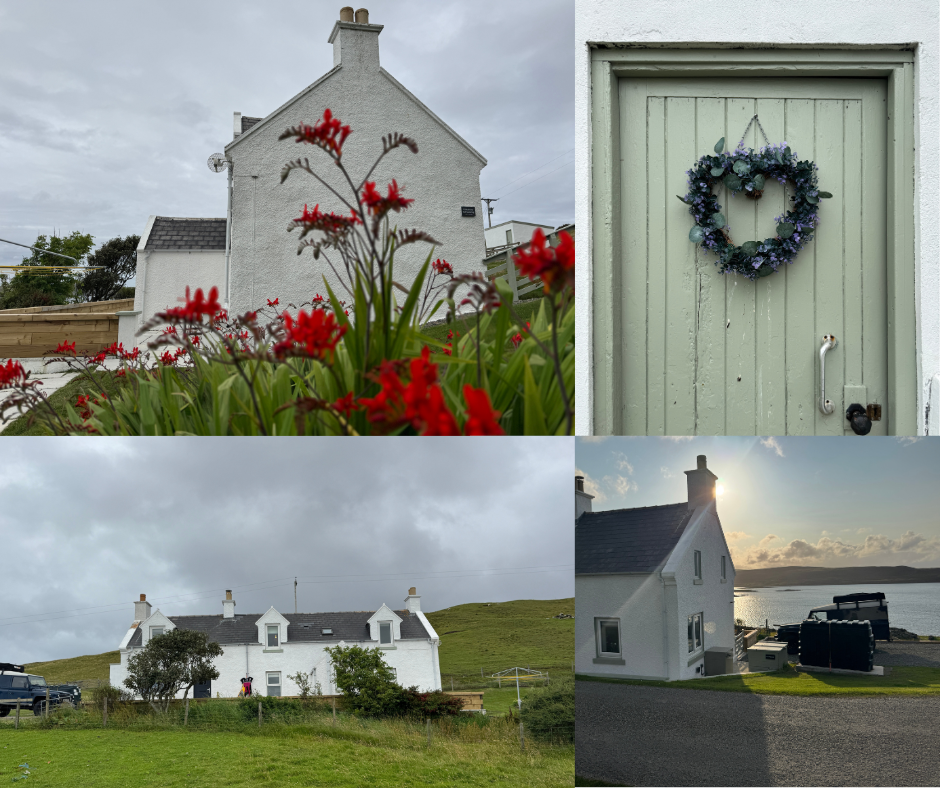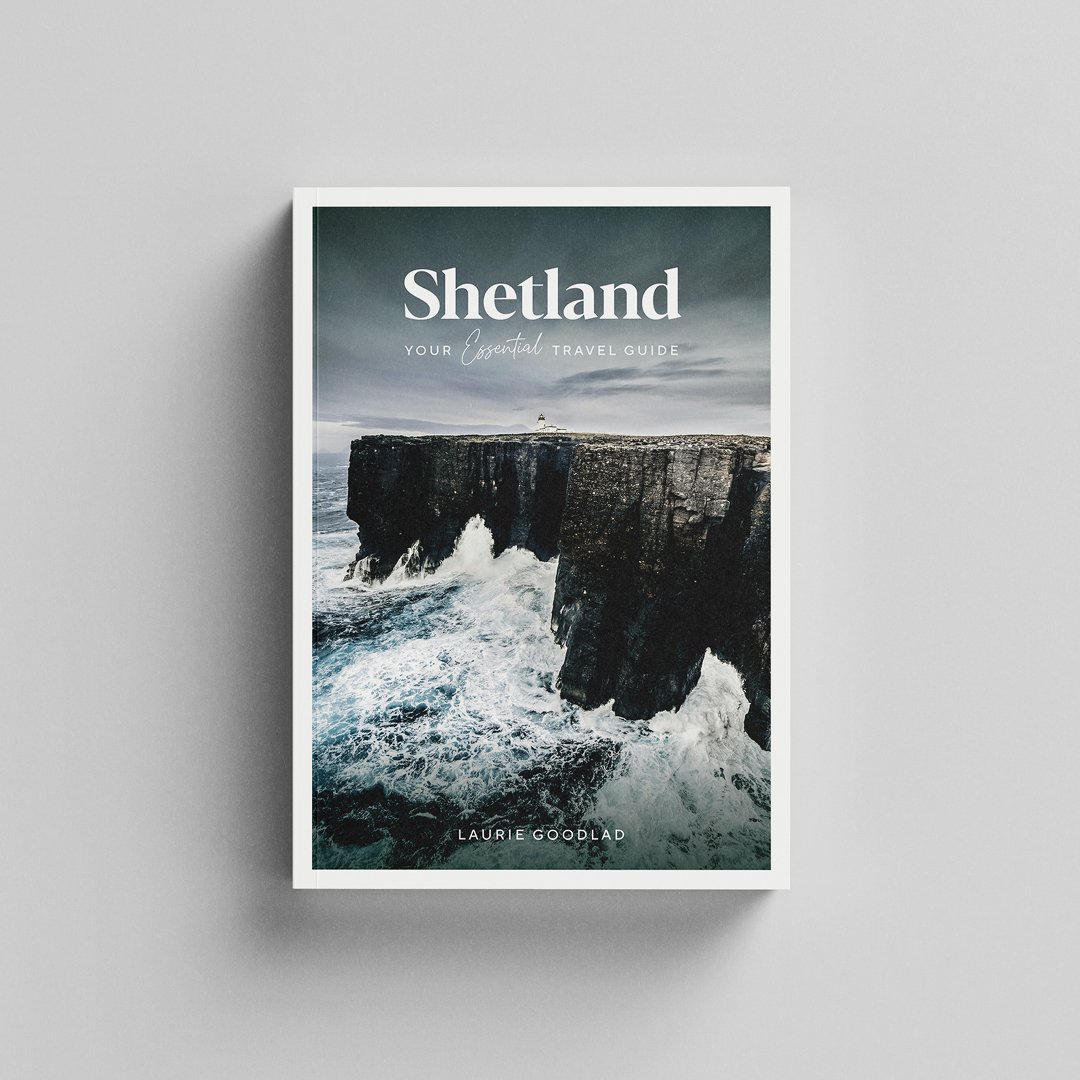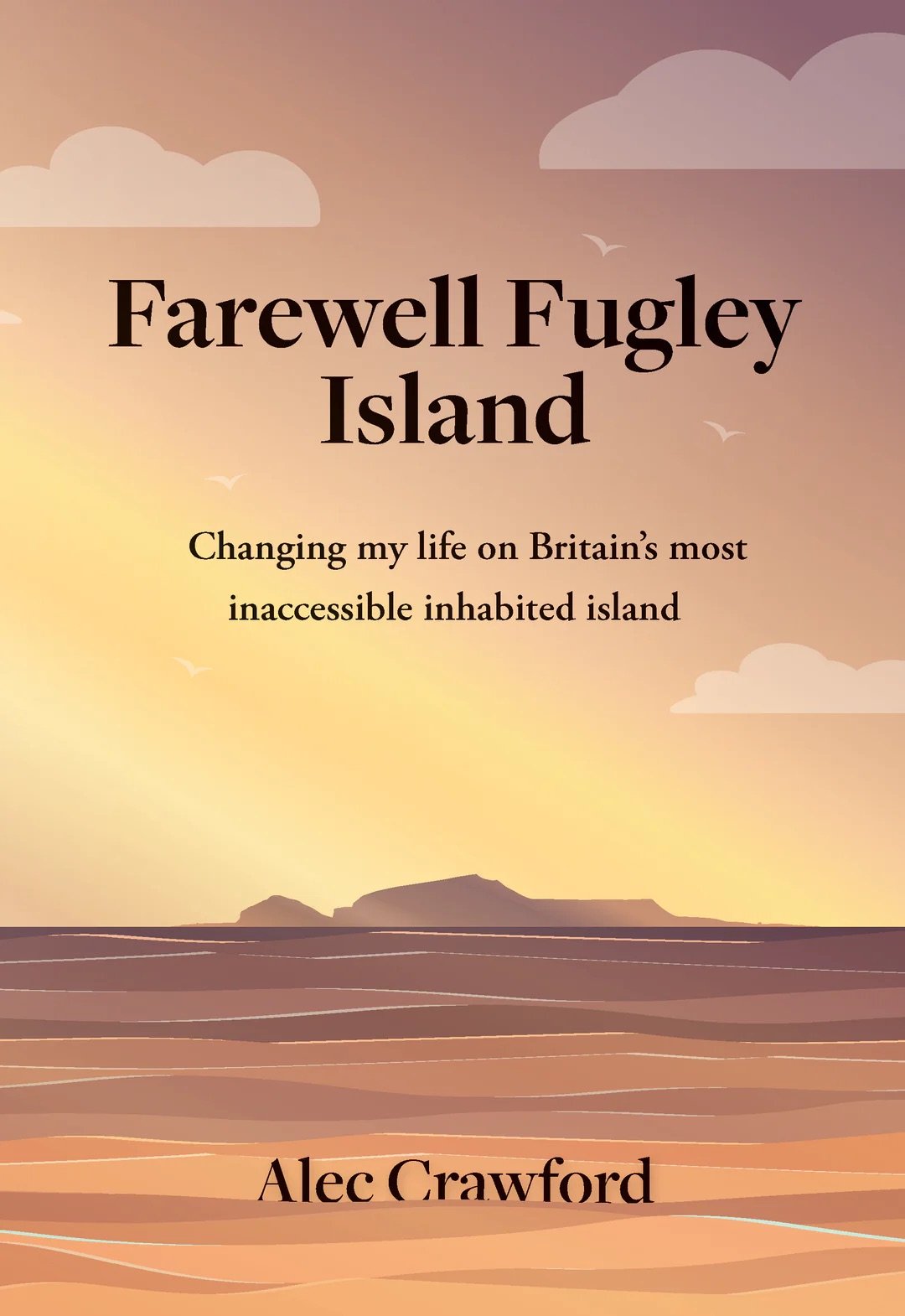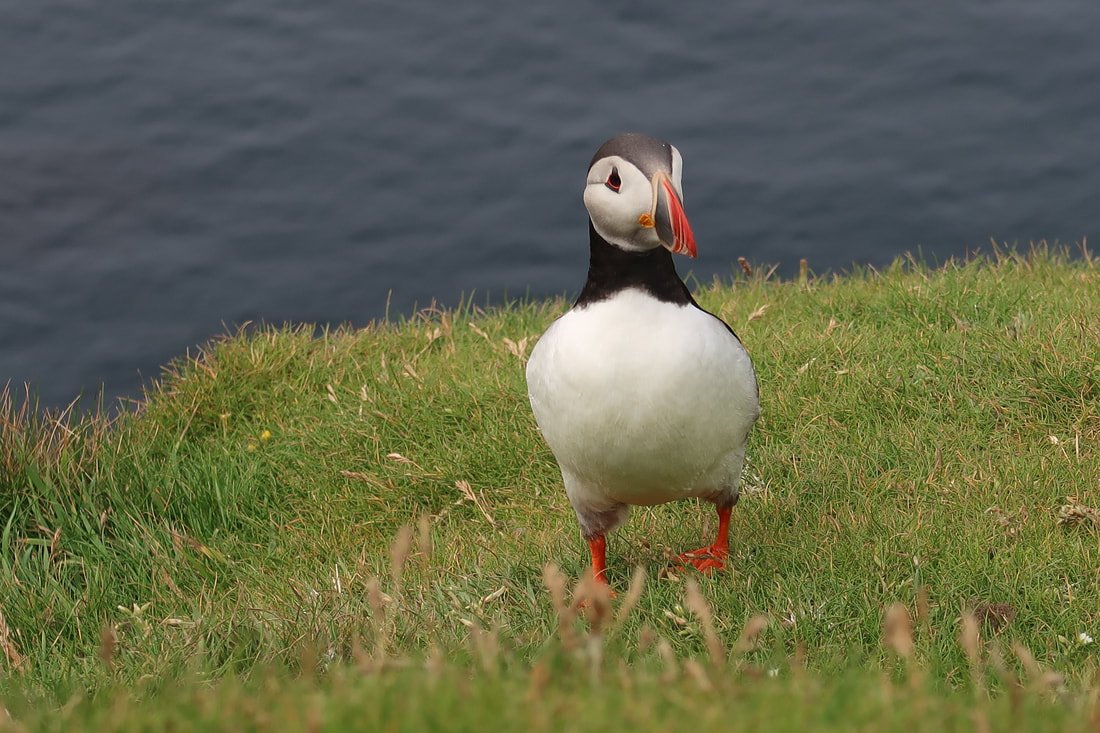Scottish travel blog from an islander’s perspective
Kirkabister self-catering: a review and itinerary for your stay
Nestled at the end of a winding country road just outside Vidlin, Kirkabister is a beautifully restored traditional cottage overlooking the sheltered waters of Vidlin Voe.
New to Shetland’s self-catering market, Kirkabister has been thoughtfully brought to life by owner Lynsey, whose attention to detail is seen throughout.
Sleeping up to eight guests, Kirkabister is ideal for families or groups looking to make the most of their Shetland holiday. Warm, welcoming, and rich in story, it’s more than a place to stay – it’s a home to return to. Read on for a full travel itinerary.
7 things you should know about Shetland’s history
Think Shetland is just a remote outpost? Think again. This northern archipelago has been a vibrant crossroads of cultures and trade for centuries. Once a stronghold of the Viking world, Shetland remained under Norse rule until 1469 and still carries echoes of that legacy in its place names and dialect.
The islands have played host to everything from Hanseatic traders and Spanish Armada shipwrecks to Dutch spice merchants and WWII resistance missions like the daring “Shetland Bus.” Fishing has long been Shetland’s economic lifeblood, and even today, more fish are landed here than in the rest of the UK combined.
With its own dialect rooted in Old Norse (not Gaelic), a vast global diaspora, and archaeological finds dating back to Mesolithic times, Shetland’s history is anything but small or simple. Dive into its rich past and discover a place shaped by sea, survival, and cultural resilience.
A trip to Papa Stour with Simmer Dim Charters
For many people visiting Shetland, a trip to one or more of the outer isles is always on the itinerary, and in Shetland, visitors are spoilt for choice. With 16 inhabited islands, 15 of them available to visit – nine by inter-island ferry – it can be tricky to pick which one to explore.
This week, I will show you why you should visit one of the lesser-explored islands, and this blog focuses on Papa Stour, with Simmer Dim Charters.
Shetland Travel Consultations: A Review
A huge thank you to everyone who has booked a travel consultation with me—I’m now fully booked! I’ve absolutely loved helping you plan your Shetland adventures, and I can’t wait to see your trips come to life.
If you missed out this time, don’t worry! I’ll be reopening bookings in autumn, so keep an eye out for updates. In the meantime, happy trip planning! I look forward to chatting with more of you later in the year.
Since Christmas, I have conducted over 40 individual consultations with people from around the world. From America to Australia, and from London to Tokyo — it’s been a privilege meeting so many people and helping them plan their adventures.
Last week, a lovely testimonial arrived in my inbox, which I wanted to share with you:
10 things to know about visiting Shetland
10 Things to Know Before Visiting Shetland!
Planning a trip to Shetland? Here are some key things to keep in mind:
Book accommodation early – 8-12 months in advance is best!
16 inhabited islands – Choose wisely based on what you want to see.
Two seasons: summer & winter – Spring & autumn are fleeting!
One base is enough – No need to move around to see it all.
Cruise ship days are busy – Plan visits to Lerwick accordingly.
Getting here – You can only arrive by ferry or plane.
Winter closures – Many attractions shut from autumn to spring.
Puffins are seasonal – Visit between mid-April and mid-August.
Book tours & meals ahead – Guides & trips fill up fast in summer.
Stay longer! – Most visitors leave wishing they had more time.
Aufguss: The incredible power of sauna in Shetland
The older I get, the more I crave experiences that ground me, that allow me to truly connect with the natural world. I find myself increasingly seeking spaces that offer respite from the constant hum of digital noise and the demands of modern life. Believe it or not, but I spend most of my days sitting at a computer – not the open spaces and horizons that you see on my Instagram stories!
So, when Haar Saua invited me to visit their sauna on the beautiful St Ninian’s Isle beach for an Aufguss session, I didn’t have to think twice. In Nordic cultures, there is a term that embodies this kind of immersive experience – In Sauna. It refers to the profound, almost spiritual feeling you get from the intense heat of a sauna; a place where time slows, and everything else fades away.
A hike to the Mosquito plane crash site, Royl Field, Shetland
The Clift Hills are a series of low-lying hills (200-300 metres) that rise from Clift Sound. Royl Field (293m) is the largest of these hills and the second largest in Mainland Shetland (and the third largest in Shetland). During the Second World War, a de Havilland Mosquito Mk VII “DZ642” of the 627 Squadron, Royal Air Force, crashed on Royl Field on 22nd November 1944.
The Clift Hills dominate every area of the South Mainland. From Burra to the west, they rise steeply from the sea below, creating a ‘wall’ between east and west. In summer, low clouds and fog often threaten to spill over the hills from the east. When the South Mainland lies shrouded in a blanket of mist, the sun usually shines to the west, the hills providing a barrier against the encroaching sea fog.
Northern lights and drystone walling in Shetland; festive 2024
Happy New Year, and thank you for coming back here to read this first blog of 2025. Who can believe it’s 2025? We’re a quarter of the way through this century. Crazy.
We had a fine festive period, very quiet, yet slowly productive in the nicest possible way. The betwixmas days brought a period of settled and still weather – unlike last year’s relentless 80mph winds that were driven in on violent easterly weather systems. The (relatively) settled weather in the final week of December saw us out and working on our drystone walls, which we’re building in the garden.
The thing I wish I’d had when I went to New York …
In 2020, just before the world as we knew it drew to a standstill, my husband and I went to New York. We spent five days exploring the city and ticking off all the ‘must sees’ from the list. I spent months planning the trip in a notebook, and while we were there, I kept a little diary of our time. We did all the main attractions: Chrysler Building, the Empire State Building, the Flatiron Building, Madison and Times Square, Central Park, the Statue of Liberty, Brooklyn Bridge, DUMBO, Top of the Rock and much more besides.
I loved the few days we spent there, but a part of me felt that I could have planned it better.
But why am I telling you all this? When planning the trip, I felt overwhelmed and frustrated that nobody would prepare it for me, sit me down, and tell me what I needed to do to make the most of this beautiful city. I felt sure someone would offer a service to create a perfect New York itinerary tailored to my needs, but there wasn’t.
A guide to Shetland’s museums & heritage centres
Despite its relatively small size, Shetland has an incredible number of cultural heritage centres, supported by a willing army of volunteers who are passionate about recording the past, telling and sharing Shetland’s history, and celebrating the stories and folklore of the islands. Shetland has a strong storytelling tradition, and much of its cultural heritage has been preserved, meaning there’s a vast swathe of information to be explored. It’s perhaps therefore not surprising that for a community so passionate about its heritage, and one steeped in thousands of years of human history, that there are so many museums and heritage centres to explore.
Smaller community museums and heritage centres offer unique and detailed insights into individual communities – from the fascinating links to the wider world and entrepreneurial people who made their mark on the international stage, to the individual communities and the details of what shaped them.
Accessibility in Shetland: all you need to know about accessible travel in Shetland
From your journey here to the most accessible venues, accommodation and tours for your stay, we’ve worked with Ability Shetland to put together a guide to accessibility in the islands.
Shetland’s contribution to modern medicine
Shetlanders have always had an entrepreneurial spirit, and a make-do-and-mend attitude that has allowed them to thrive and the 18th and 19th centuries saw some of Shetland’s greatest contributions to modern medicine.
In the 18th century, smallpox would tear through communities here, killing up to one third of the population, and one man, John Williamson, made a tremendous contribution to the islands, saving thousands of lives in the process.
John Williamson, better known as Johnnie Notions, was a self-taught man. A seaman and weaver to trade, he had a keen interest in medicine. He lived in the North Mainland at a time when smallpox often ripped through communities, brought in by seamen.
Shetland, Your Essential Travel Guide
After years of meticulous planning, research, and exploration, we are thrilled to announce the forthcoming release of our travel guide to Shetland. With stunning colour photographs and more than 250 pages brimming with useful information and insider tips, Shetland, Your Essential Travel Guide, is a labour of love, born from a shared dedication to showcasing the islands' natural beauty, intriguing history, and vibrant community life.
Exploring the Shetland Isles: A Caravan Adventure
The Shetland Isles, a remote and captivating archipelago located in the North Sea, are a hidden gem waiting to be explored. If you're an avid caravanner looking for a unique adventure, taking your caravan to Shetland is a fantastic idea. With stunning landscapes, rich history, and warm hospitality, Shetland offers a one-of-a-kind experience that you'll cherish forever. In this blog post, we'll guide you through the essential tips for taking your caravan to Shetland, including places to pitch, and highlight some must-visit destinations on the islands.
Book Review: Wild Shetland Through the Seasons
Brydon Thomason is a Fetlar-born Shetland naturalist who has spent decades in Shetland’s landscapes, photographing and observing the incredible wildlife of our islands. Brydon is also the owner of Shetland Nature, who run wildlife holidays and guided tours throughout Shetland, and this latest book showcases his incredible archive of photographs, along with his insights into the seasons which, as they change, bring different wildlife experiences with them.
The book itself is a work of art, featuring 80 species illustrated through 179 images across 286 pages and opening with an incredible double-page spread of a raft of eider ducks, commonly seen throughout the winter months around Shetland waters. The captivating photographs are brought to life with Brydon’s words that take the reader on a journey through Shetland’s seasonal wildlife highlights.
Foula’s Festive traditions & a guide to visiting
Lying about 20 miles west of Shetland, Foula is one of the UK’s most remote islands, and arguably the most isolated of any island in the UK. With a population of about 35, many thousands of birds, and five square miles to explore, Foula has an ‘edge of the world’ feel and will leave a lasting impression on those who visit.
Sitting alone in the vast, often unforgiving expanse of the North Atlantic, Foula looms from the horizon and is visible on a clear day from most parts of Shetland’s west coast. Its looming silhouette represents the last outpost of the UK, a final frontier. Echoing noisily with the sound of hundreds of thousands of seabirds in summer, and hard to access in winter as its name suggests – the word Foula comes from the Old Norse Fugley, meaning ‘bird island.’
Spine-tingling tales from Lerwick
With Hallowe’en upon us, I wanted to take a look at some of the spine-tingling and tragic tales from Lerwick. Last year, I explored Shetland’s haunted places, and this year, I wanted to focus on our capital town, Lerwick. Lerwick grew from the 1600s with Dutch fishermen coming here every summer to begin their summer herring fishery. The first mention of Lerwick came in 1625 when the lawmakers in Scalloway expressed concern about the lawlessness displayed in Lerwick, where smuggling, drinking, theft, assault and prostitution were cited as grounds to raze Lerwick to the ground.
7 top tips for planning your Shetland Wool Week trip
As I write this, we are in the throes of the 14th Shetland Wool Week festival, which sees the arrival of knitters from all over the world in the islands to take part in the week-long celebration of Shetland’s textile heritage.
Wool Week is a hugely popular festival and marks the end of the busy summer season here in Shetland, and with this popularity comes high demand for accommodation, tickets and transport.
This blog is aimed at those planning to visit for Wool Week and how best to do this without too much stress!
Hiking Papa Stour’s dramatic west coast
A mile offshore from Sandness, accessible several times a week by ferry from West Burrafirth, is Papa Stour, known locally as Papa. The name comes from the Old Norse language, meaning ‘the great island of the priests’. The island is geologically fascinating, formed from volcanic ash and lava, which is a real gift to hikers seeking the drama, allure and breathtaking vistas offered by the incredible coastline.
This fertile and lush island had a population of 382 in 1841, which has declined steadily over the past 40 years. Today, the 15 or so permanent residents no longer have a school or shop, and there are few facilities on the island for visitors beyond the Ferry Waiting Room and church, which is undergoing renovation. Despite this, Papa is an island that calls to be explored, offering endless hours of enjoyment along its rugged coastline. The main settlement centres around the ferry harbour on the fertile east coast of the island at Housa Voe.
A day in Skerries
Out Skerries, known locally as Da Skerries or just Skerries, are a small low-lying trio of islands – Housay, Bruray and Grunay – that lies 13 miles off Shetland’s east coast, and four miles northeast of Whalsay. The coastline is a patchwork of small rocks and skerries that rise uncertainly from the sea on Shetland’s eastern horizon.
The island is home to around 30 people who are largely dependent on the fishing industry. Bruray and Housay are connected via a road bridge, and Grunay, which offers protection for the harbour, is now uninhabited, although the remains of the lighthouse buildings associated with the dominating Bound Skerry Lighthouse can still be seen across the harbour.
More about Shetland
Shetland is in my blood. Visit my blog for local insights, tips and advice.













































Nestled at the end of a winding country road just outside Vidlin, Kirkabister is a beautifully restored traditional cottage overlooking the sheltered waters of Vidlin Voe.
New to Shetland’s self-catering market, Kirkabister has been thoughtfully brought to life by owner Lynsey, whose attention to detail is seen throughout.
Sleeping up to eight guests, Kirkabister is ideal for families or groups looking to make the most of their Shetland holiday. Warm, welcoming, and rich in story, it’s more than a place to stay – it’s a home to return to. Read on for a full travel itinerary.